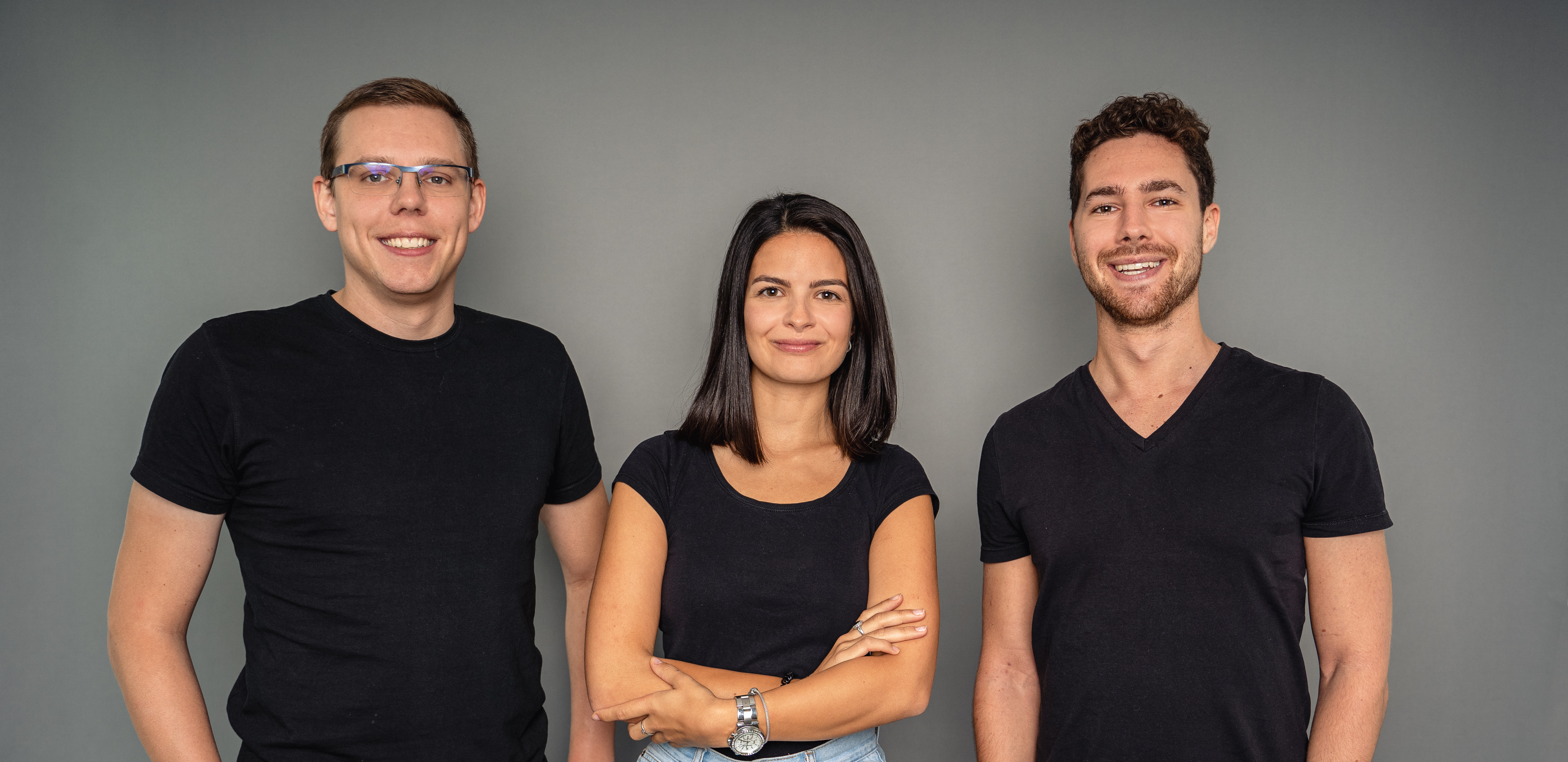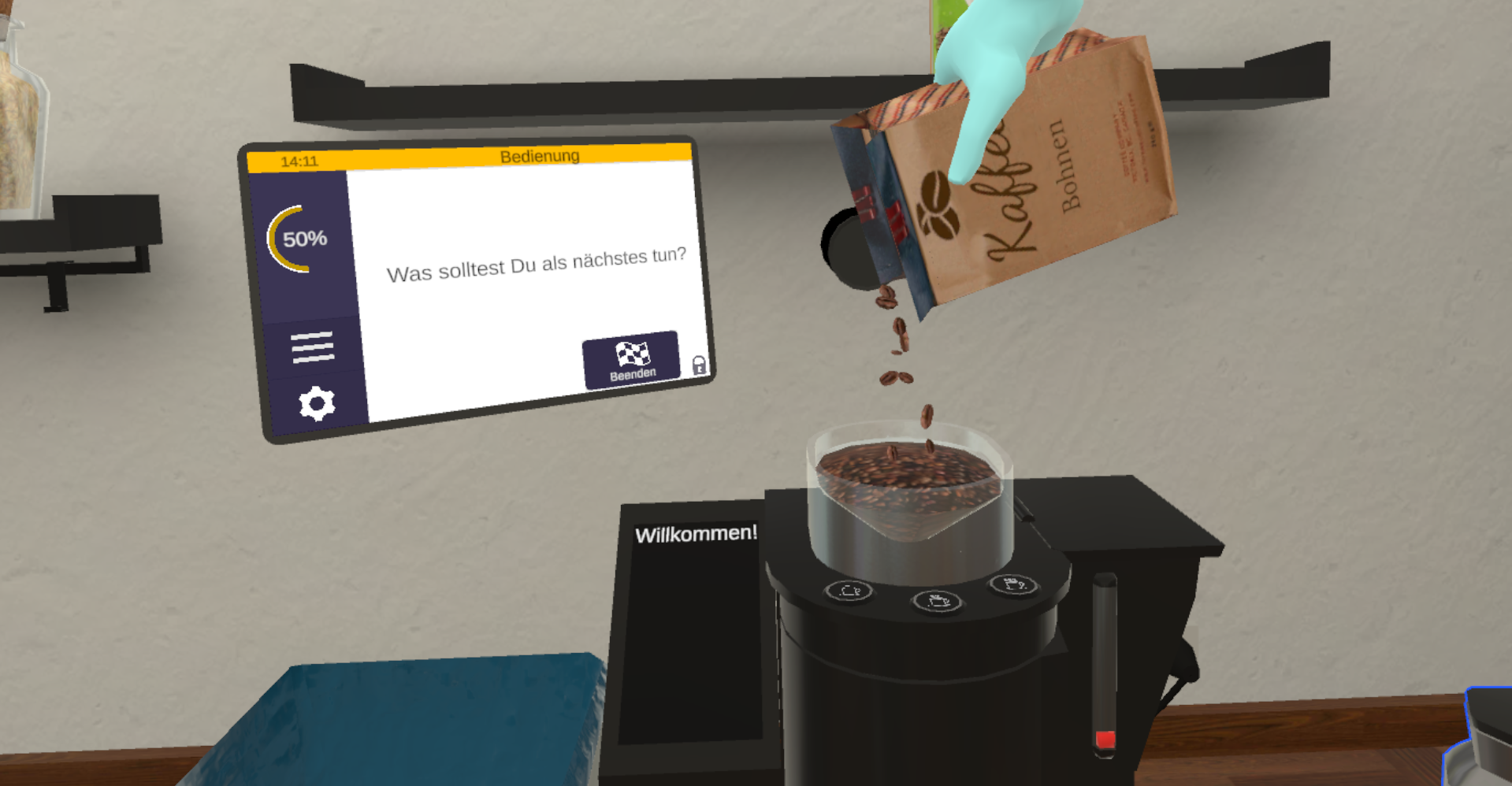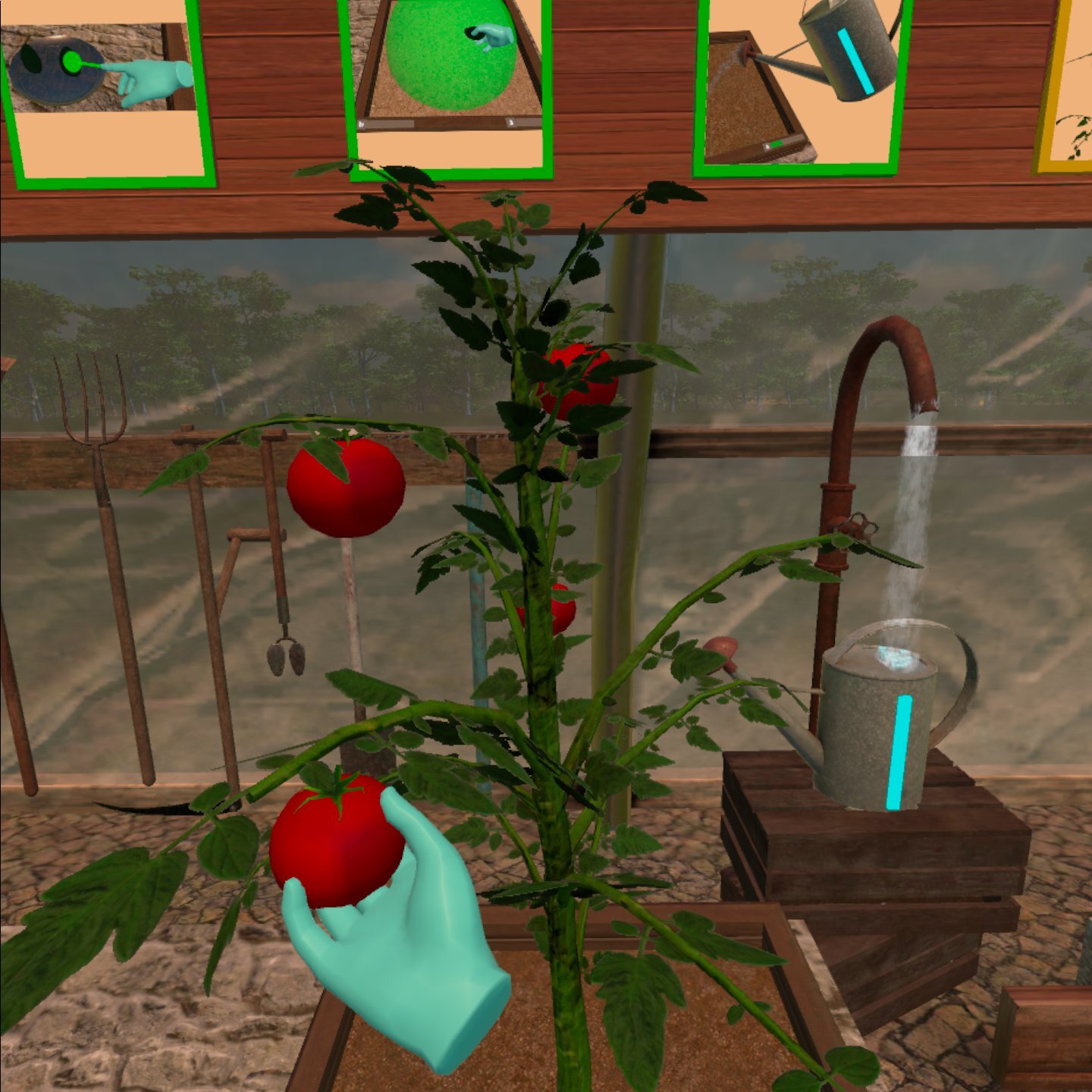Going to the supermarket and scouring the shelves for items on a shopping list, popping into the bakery on the way home, enjoying a coffee in the comfort of your own home. What sound like normal everyday activities are a huge challenge or even an impossible task for many people: in Germany alone, more than 7 million people a year suffer from issues that can lead to cognitive disorders - and this concerns all ages. The causes range from accidents, strokes and brain operations to epilepsy, dementia and congenital brain diseases.
The kind of cognitive problems that arise include difficulties with memory, concentration or attention. The brain then needs to be trained accordingly to restore the lost cognitive abilities.
This is where Julian Specht and Barbara Stegmann come in: the two psychologists founded the start-up company living brain in Heidelberg in 2017. Their aim is to change rehabilitation sustainably and offer a new kind of therapy to neurologically ill people with cognitive disorders. "Widespread rehabilitation therapy still mostly consists of exercises using a pen and paper or computer programmes, often with little success. If you want to learn how to swim, you don't read a book," explains Stegmann. So what approach are the two company founders taking? Using specially developed software, they are looking to offer those affected a fun training option that closely resembles everyday life, and thus fundamentally changes rehabilitation.
The starting point of living brain
 The living brain team: company founders Julian Specht (on the right) and Barbara Stegmann, and Software developer Till Ikemann (on the left). © living brain
The living brain team: company founders Julian Specht (on the right) and Barbara Stegmann, and Software developer Till Ikemann (on the left). © living brainThe main motivation driving the two founders, who met while studying psychology, goes back to their own experiences. Julian Specht suffered from epilepsy from the age of ten. When he was 20, he decided to have brain surgery, which involved a high risk of cognitive impairment. The doctors' answers to his question about rehabilitation options were sobering. "The crux of the matter was that the choices available were still pen and paper and learning rows of numbers and words by heart," Specht explains. "Even if this means that over time you are able to use numbers and words better, what you have learned cannot be transferred to other everyday tasks. Practising number sequences does not make it easier for the patient to make coffee or go shopping again. Not to mention dealing with work-related tasks." As a result, many patients would become demotivated and feel helpless when faced with problems.
Julian Specht was one of the lucky ones: he was seizure-free after surgery and has no neurological deficits. However, not everyone is so fortunate. He and Barbara Stegmann realised that a solution was needed for those affected. This was the starting point for living brain.
Supermarket in the living room - rehab in the crucial time window
 Close to reality: Patients regain cognitive abilities by doing exercises with the VR software. © living brain
Close to reality: Patients regain cognitive abilities by doing exercises with the VR software. © living brainThe two scientists have developed a concept that they are continuously expanding and adapting. "Cognitive abilities are complex: it's about concentration, attention, language, recognising and classifying things, people and situations," Specht explains, underlining the need for a completely different form of therapy. "People need to be trained to deal with everyday life again, but training in real situations is risky if patients cannot yet control movements and situations properly." This is how the idea of using virtual reality (VR) came about. "Our goal is to create an environment that mirrors real life as closely as possible." The two founders brought an experienced software developer called Till Ikemann onto the team. "We have developed software that enables people to learn everyday activities in a fun way with a combination of virtual reality and psychological learning strategies." Patients wear the company’s VR headset as they move around a virtual room, a kitchen for example, as they are trained in tasks such as making coffee and pouring the hot coffee into a cup - without the risk of injury or scalding themselves.
"The full application package consists of a VR headset and a tablet so the therapist can watch the patient live. The package is already available for clinics," Stegmann explains. Since a VR headset can be used outside therapy appointments and rooms, and requires no fixed equipment or computers, training can be started without any complications. In the future, patients could start training even before they have begun their rehabilitation programme. The aim is not to replace therapists, but to close a gap in care and make realistic training available. It's all about speed - the key point, as Stegmann explains: "The big problem is that therapy is usually started too late. After brain injuries, there is a critical window of about six to nine months in which neuronal plasticity is active to a higher degree."1-7
Why is this? It’s because the brain tries to heal or compensate for the injured or failed functional area. If rehabilitation has already started during this period, a lot more can usually be achieved than if rehabilitation starts later. The full potential for improvement is therefore deployed much sooner. For the best possible results, the brain should be retrained immediately after an accident or operation. Intensive training, in which a multitude of stimuli are simultaneously linked via several sensory channels with cognitive and motor processes through virtual reality, has a positive effect.8 "Scientific publications prove that VR can stimulate neuronal plasticity to a particularly high degree," Stegmann says, explaining the potential.9
Added value of medical care - the decisive leap
 Example situation presented by the living brain software. Patients learn everyday tasks effectively using exercises with VR in the critical time window. © living brain
Example situation presented by the living brain software. Patients learn everyday tasks effectively using exercises with VR in the critical time window. © living brainLiving brain's software is an evidence-based medical product designed to provide real help to sufferers. "Nothing is more frustrating than outdated methods or a cure that doesn’t deliver. In our experience, quality and science-based work are essential features in the development of a product that helps sufferers in the long term," says Stegmann, explaining the decision to take the scientific route. "Obtaining all the certifications and financing clinical trials can be particularly challenging. Nevertheless, these aspects are especially important to ensure the quality and scientific basis of the product, which, from our point of view, are fundamental." To this end, the start-up has signed cooperation agreements with doctors, psychologists, other scientists and the Asklepios Neurological Clinic Falkenstein, among others. In an initial study, living brain has already investigated user experience and usability in patients, i.e. subjective feelings and the application process or user-friendliness. "Initial feedback from patients has been positive throughout," explains Specht. "Feedback is the most important thing for us to further improve the product and optimise its benefits."
Both founders are pleased about the growing acceptance of new approaches and technologies in the healthcare sector. "We see the use of new technologies as an opportunity to further improve existing methods, make them available to more people and thus close gaps in treatment and care. Our goal is to help patients where they need it," Specht explains. If the patient receives therapy options in the critical time window, real added value in medical care can be achieved. The importance of functional, everyday-based rehabilitation is likely to be immense, especially for the individuals affected.